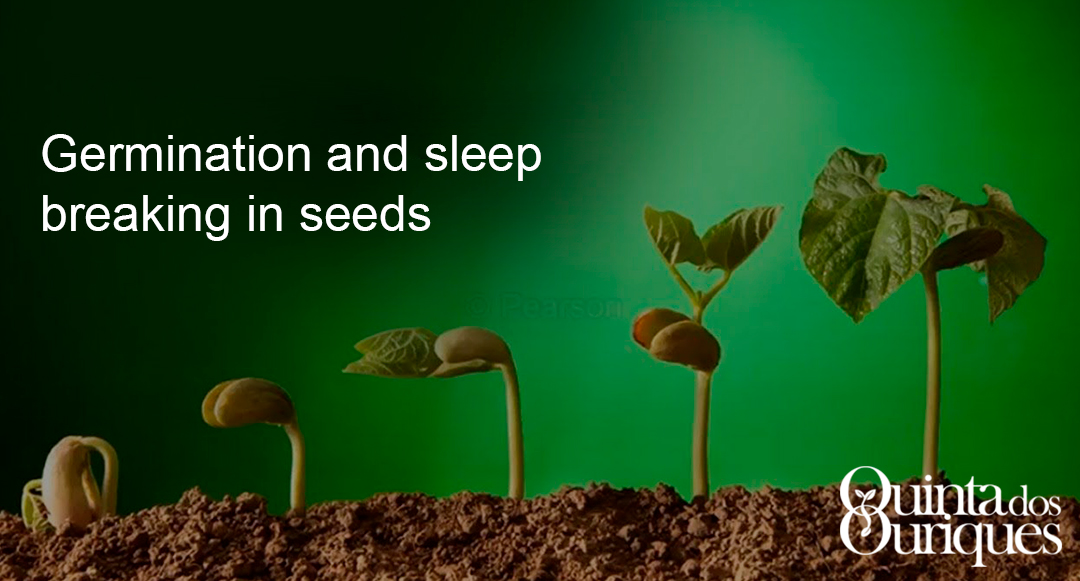
Seed dormancy is a process characterized by delayed germination, when seeds even under favorable conditions (humidity, temperature, light and oxygen) do not germinate. About two thirds of the tree species have some kind of dormancy, a phenomenon that is common in temperate species (cold regions), as well as in tropical and subtropical plants (warm regions). The phenomenon of seed dormancy comes from an adaptation of the species to the environmental conditions that it reproduces, which may be of high or low humidity, direct light incidence, low temperature, etc. It is therefore a resource used by plants to germinate in the most favorable season for their development, seeking through this the perpetuation of the species (guarantee that some individuals settle) or colonization of new areas. Therefore, when faced with this phenomenon there is a need to know how species overcome the dormancy state in natural conditions, so that through it we can look for alternatives for a rapid and homogeneous germination, this process is called SLEEP BREAK.
The seed dormancy phenomenon can be divided into primary and secondary dormancy:
– Primary dormancy is the one that already manifests when the seed completes its development, that is, when we harvest the seeds they already have dormancy.
– Secondary dormancy is when mature seeds do not have dormancy, ie they germinate normally, but when exposed to unfavorable environmental factors are induced to the dormancy state.
Main causes of seed dormancy:
Impermeable integument: seeds with these characteristics are called hard shell seeds, because they cannot absorb water and / or oxygen.
Physiologically immature or rudimentary embryo: in the process of seed maturity the embryo is not fully formed and favorable conditions need to be developed for its development.
Inhibiting substances: These are substances in seeds that can prevent their germination.
Dormant Embryo: The embryo itself is in a state of dormancy, usually in this case dormancy is overcome with thermal shock or light.
Combination of causes: Seeds do not necessarily have only one type of dormancy, but there may be more than one cause of dormancy in the same species.
Seed dormancy breaking processes:
Chemical Scarification: It is a chemical method, usually made with acids (sulfuric, hydrochloric etc.), which allows the seeds to perform exchanges with the medium, water and / or gases.
Mechanical scarification: is the abrasion of seeds on a rough surface (sandpaper, rough floor etc). It is used to facilitate the absorption of water by the seed.
Stratification: consists of a humid treatment at low temperature, assisting the seeds in embryo maturation, gas exchange and water soaking.
Temperature shock: It is made with alternating temperatures varying in approximately 20ºC, in periods of 8 to 12 hours.
Hot water: It is used in seeds that have an integument impermeability and consists of immersion of the seeds in water at a temperature of 76 to 100ºC, with a specific treatment time for each species.
11 Responses
Hi, I purchased some rowan (sorbus aucuparia) seeds a while back from etsy. Do you have a link to germinate these?
Good morning Mr Jason, we have germination manuals for various seeds. Whenever you make a purchase with us and want the germination manual, just access the link below.
https://www.ouriquesfarm.com/#MANUALS
I am trying to access the germination instructions for Santalum Album. I bought 100 Santalum album to grow in Naples, Florida a week ago. The receipt gave me an access code, but did not include the order #. Thanks
Good morning Mr Bob, we couldn’t find purchase history made by your name or email. Did you use a different profile at the time of purchase?
Do you provide guidance on how to germinate seeds please.
I am intending to grow more and buy from you.
I have agave stricta Rubra from you.
When and how to sow please.
Many thanks
Nick
Good morning Mr Pickles, we have germination manuals for various seeds. Whenever you make a purchase with us and want the germination manual, just access the link below.
https://www.ouriquesfarm.com/#MANUALS
Which is the best method to germinate the dragons blood trees.
Good morning Mr. Bartosz, we have germination manuals for various seeds. Whenever you make a purchase with us and want the germination manual, just access the link below.
https://www.ouriquesfarm.com/#MANUALS
Sir,, I do not completely understand the dormancy process. Could you please reply as what I need to do in order to have healthy plants. I am doing this as a hobby. What time of year do I plant? What do I need to do to the seeds before planting ?Do you have other interesting seeds for y area/ Thanking you in advance.
Good morning Mr Jones, we have germination manuals for various seeds. Whenever you make a purchase with us and want the germination manual, just access the link below.
https://www.ouriquesfarm.com/#MANUALS
I purchased two packets of dwarf poinciana seeds – I received an order number but no access code. I attempted to use the contact form but encountered a server error. Please send either an access code or the sprouting instructions to my email. Thank you.